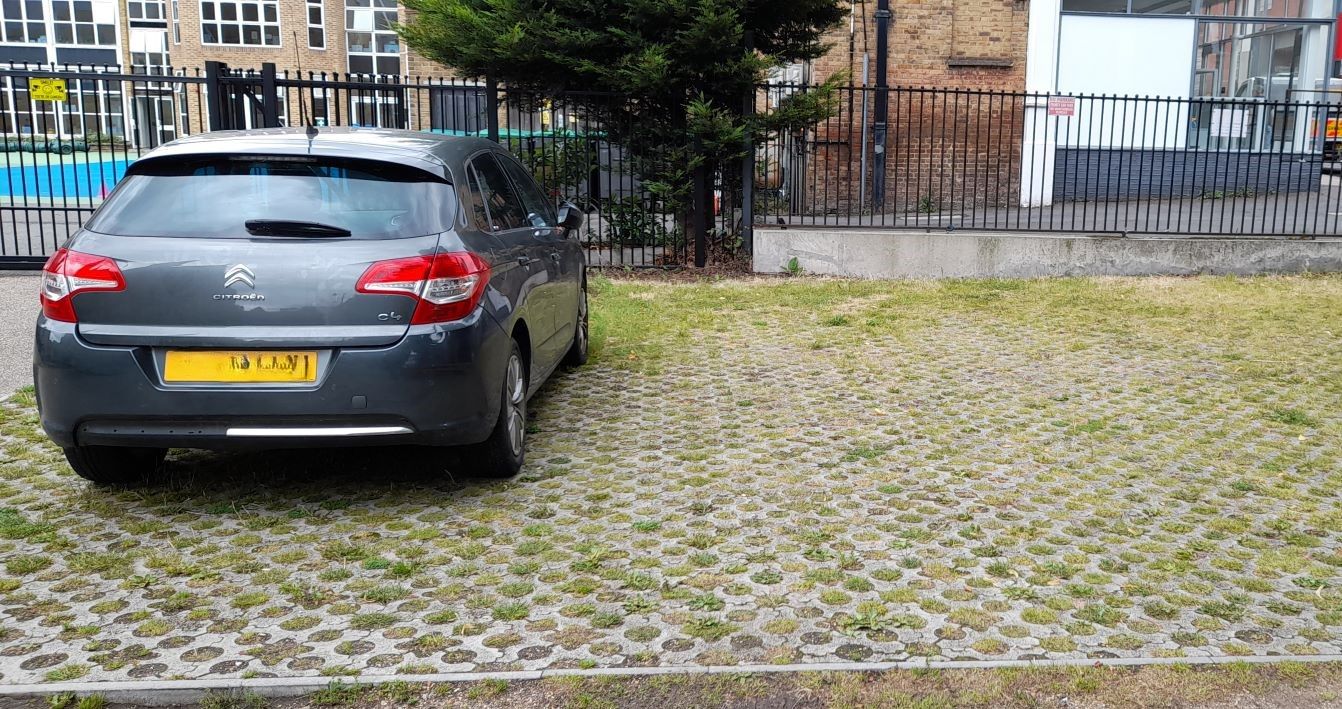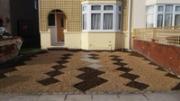
What is matrix paving?
Matrix paving, sometimes called grasscrete, is precast concrete blocks with a matrix structure. Gaps and holes in the blocks allow plants to grow and the underlying soil to be exposed to air and rain. So the overall effect is green, while providing a parking surface.
At present, these surfaces are more commonly used in car parks, but private gardens are just as suitable.

What’s good about it?
There are several reasons why matrix paving is much more suitable for front garden parking than impermeable bricks and concrete, ‘permeable’ paving blocks and gravel surfaces so widely used at present.
1. There is direct contact between air and soil. This allows rainwater to soak in, CO2 to be absorbed from the air (carbon sequestration) and prevents the underlying soil from drying out, so soil-dwelling animals and micro-organisms can live in it. There is also less risk of subsidence which can happen when hard surfaces replace exposed soil and planting.
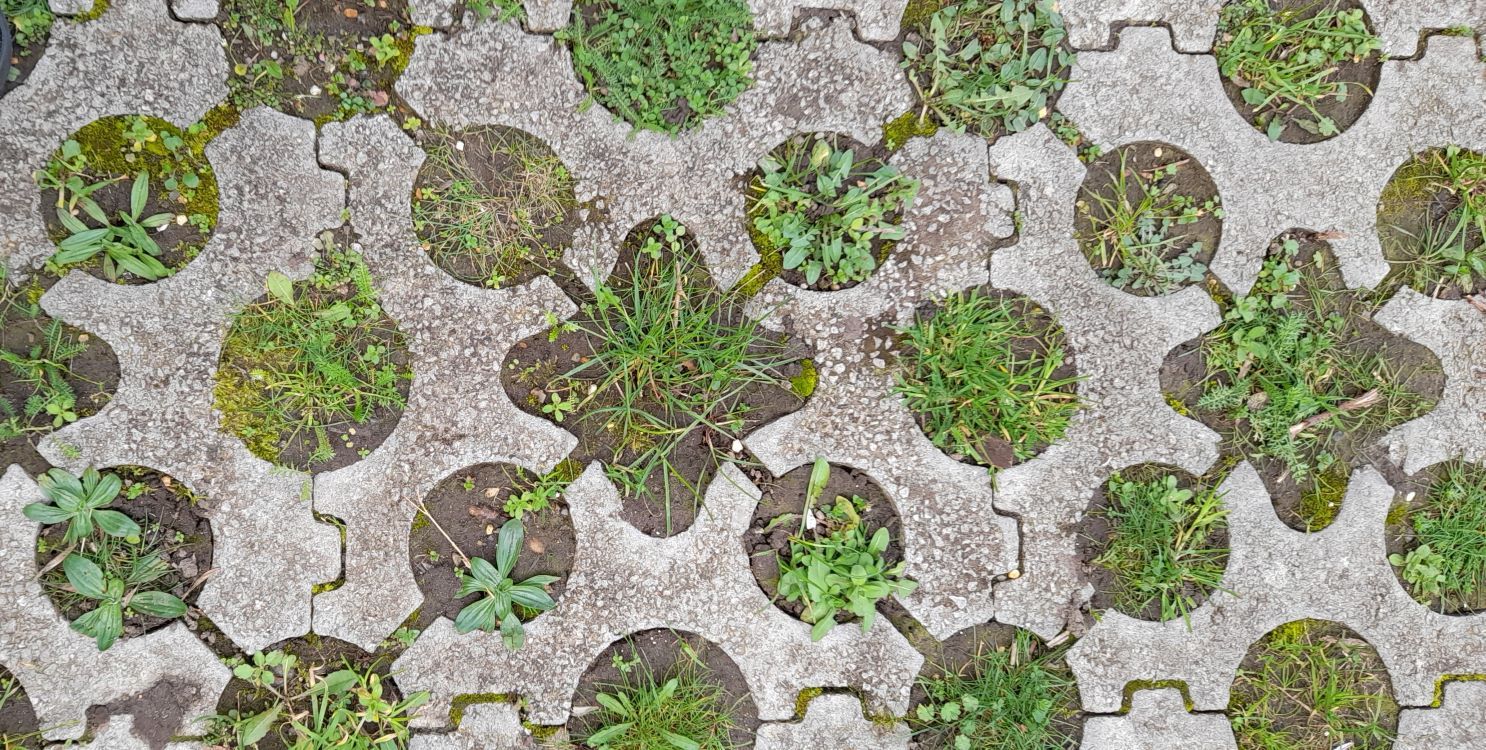
2. A wide variety of plants can grow in the gaps. Each gap in effect provides a mini habitat, home to one or several small plants. It’s surprisingly biodiverse. In a well-established matrix-paved car park in central Ealing, we found at least 33 species of flowering plant, plus various grasses and mosses (see below for more details). These are plants that cope with being driven over and parked on, and provide food for pollinators and shelter for a variety of small animals and insects.
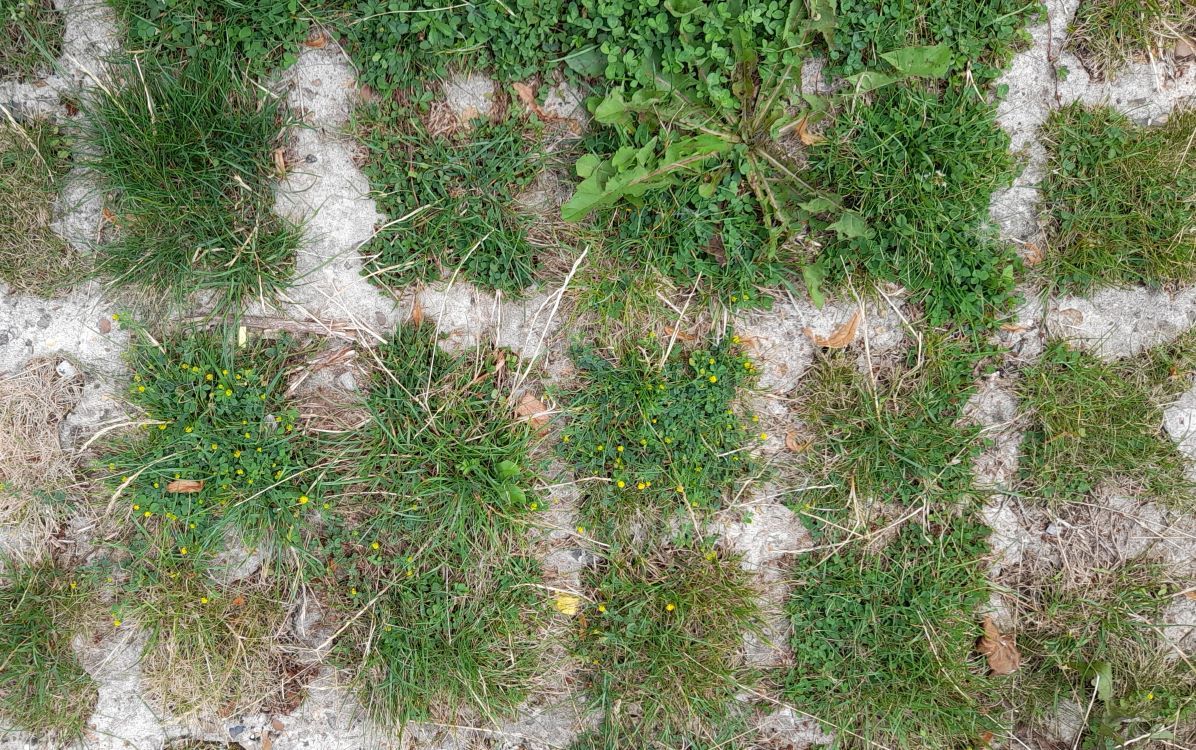
3. It looks (and is) deliberately green. Plants and ‘weeds’ grow but look as though they are meant to be there, as indeed they are. The overall effect is green AND managed. This is in marked contrast to the unmanaged ‘weeds’ that quickly spring up in permeable paving or gravel. Very far from their flawlessness at original installation, after a few years such surfaces often just look untidy and neglected.
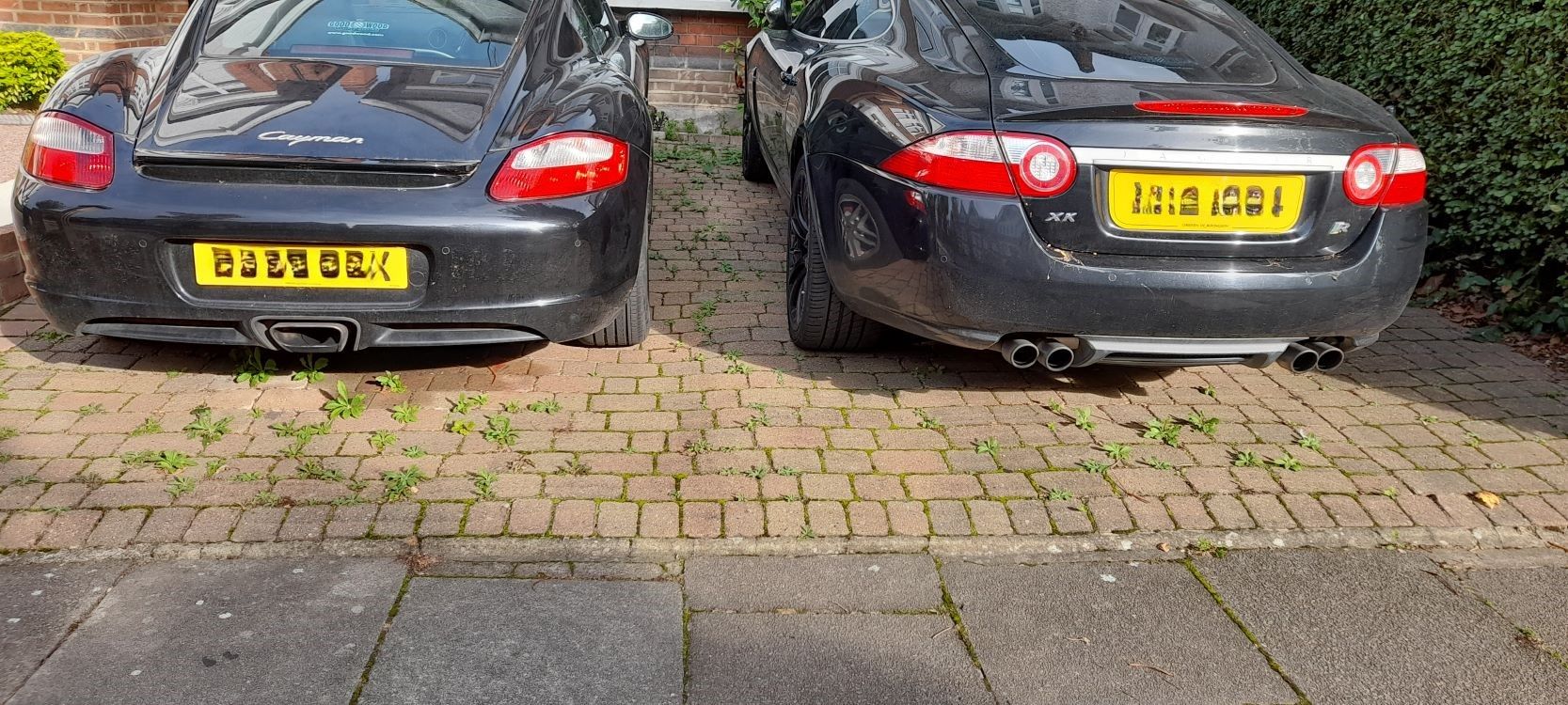

4. It really is low maintenance. It doesn’t need sweeping, scouring, power washing, dousing with weedkiller, brushing with weed-suppressing sand, moss and weeds digging out, drainage channels unblocking or anything else that householders feel the need to do. Leaves, flowers, twigs etc. from trees get broken down and absorbed by natural processes. The only thing that might be required is a quick snip of any plants around the edge that get too tall or seed prolifically. Being driven over and parked on keeps most of the plants small and compact.
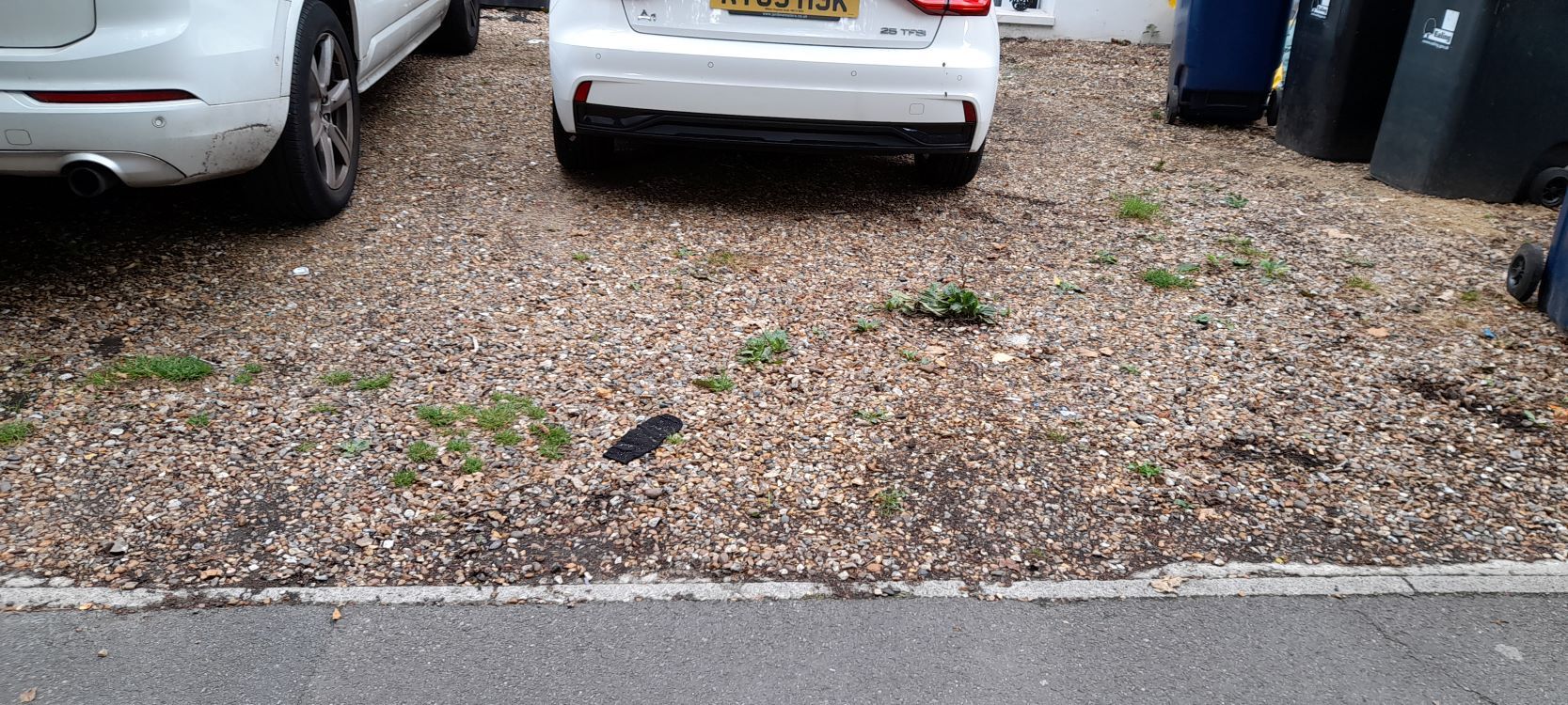

We need to accept the iron law of front gardens: they will always fight to be green. There’s no point in wasting time, money and resources fighting for perfection. It’s much better to accept their rule.
Instead, we should welcome the multiple benefits a green parking surface brings, and its help in combating the effects of climate change and biodiversity loss – from rising flood risk and more health-harming heat, to seeing fewer birds and other wild species in our neighbourhoods – in our towns and cities.
Matrix paving, just used for the minimum area required for parking, can be a key tool for this.
Government should urgently regulate to require green parking surfaces in all front gardens used for parking.
Research on a matrix-paved car park in central Ealing
In May 2024 we sampled ten percent of the matrix-paved car park at Christ Church in central Ealing. The surface has been in place for at least 16 years. Using randomly placed one metre square quadrats, we counted and recorded the plants in each of 13 quadrats.
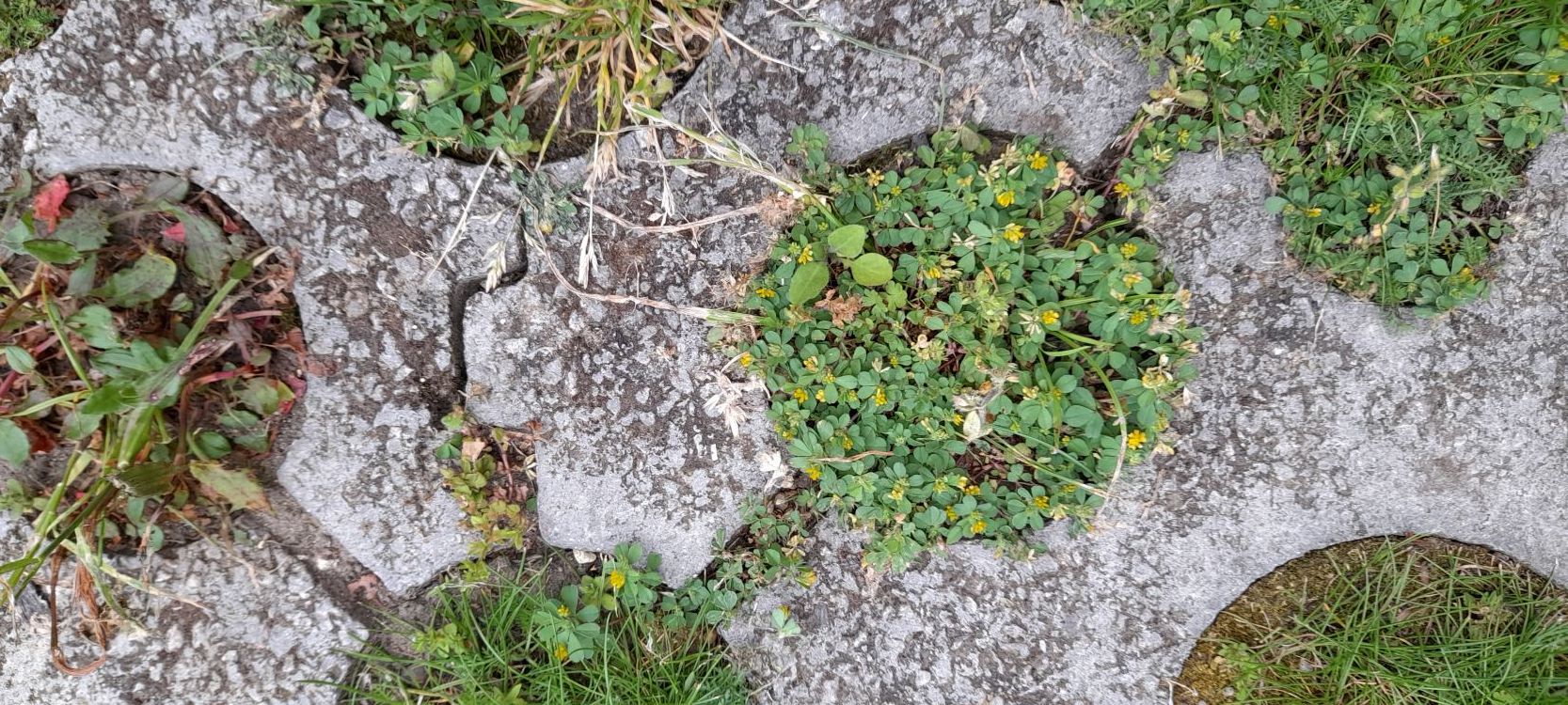
We found a total of 33 different species of flowering plants in the entire sample. We hadn’t much idea what to expect but this seems quite a lot! The most numerous plants were Wall Speedwell and Dandelion (an important nectar source), followed by Ribwort Plantain, Yarrow, Oxeye Daisy, Common Mouse-ear, Small-flowered Crane's-bill, Broadleaf Plantain, White Clover and Procumbent Pearlwort.
But then there was a long list of 23 others, including Field Madder (rare in Ealing), Ragwort, Self Heal, Black Medick, Common Knapweed, Broad-leaved Dock, Lesser and Slender Trefoils, Dove's foot Crane's-bill, Common Chickweed, Common Daisy, Groundsel and various clovers, nettles and other plants which we could not identify with certainty because they were not in flower. We didn’t count grasses, which were abundant throughout, or mosses, often also present.

It was also interesting to find that the parts of the car park that are regularly parked on (mostly during the daytime in this case) had both more individual plants, and more species, than the parts that are regularly driven over or are at the edges:
- In the parked-on areas, there was an average of 54 plants per square metre and 24 species in the sample.
- In the driven-over areas there was an average of 28 plants per square metre and 16 species in the sample.
- In the edge areas there was an average of 44 plants per square metre and 14 species in the sample.
So the parked-on areas seem to offer the most favourable environment to the widest range of species. This seems counterintuitive but could be because parked cars provide some shelter from extreme daytime heat so the soil doesn’t dry out, plus warmth as cars warm up in the sun. And because the plants can’t grow very tall there is less chance of being dominated by larger individuals.
In contrast, in the driven-over areas there are fewer species that can cope with their flowers, leaves, stems and the soil around their roots being regularly crushed. At the edges it’s the opposite: the plants have more opportunity to grow taller, so species that can do this have the advantage and can dominate. So there are fewer species overall.
It looks as though this car park is actually an important source of biodiversity in the centre of Ealing! Biodiversity is essential for the processes that support all life on Earth. Without a wide range of animals, plants and microorganisms, we cannot have the healthy ecosystems that we rely on to provide us with the air we breathe and the food we eat. Whoever decided on this parking surface was very forward-thinking.
